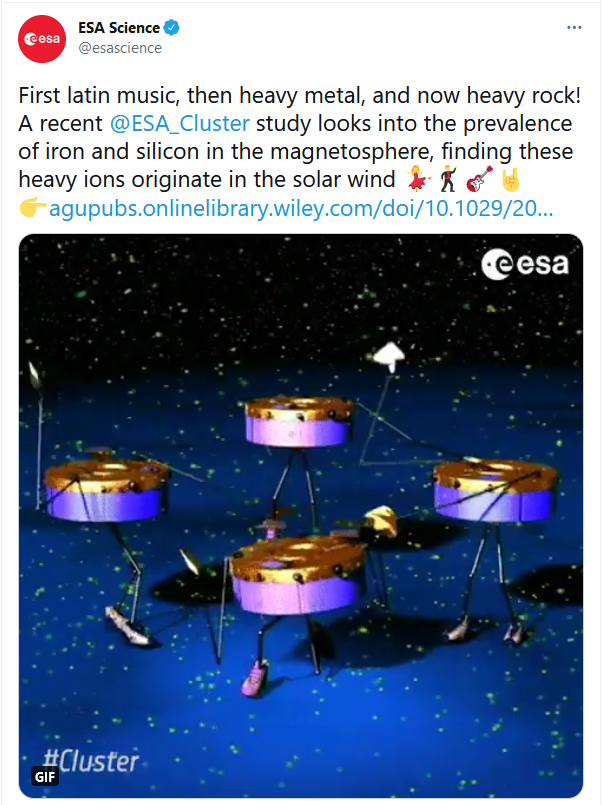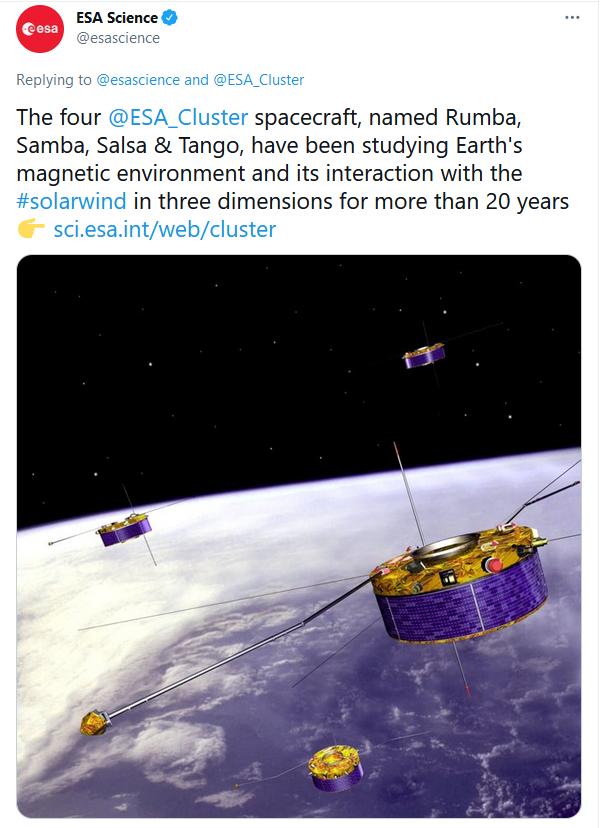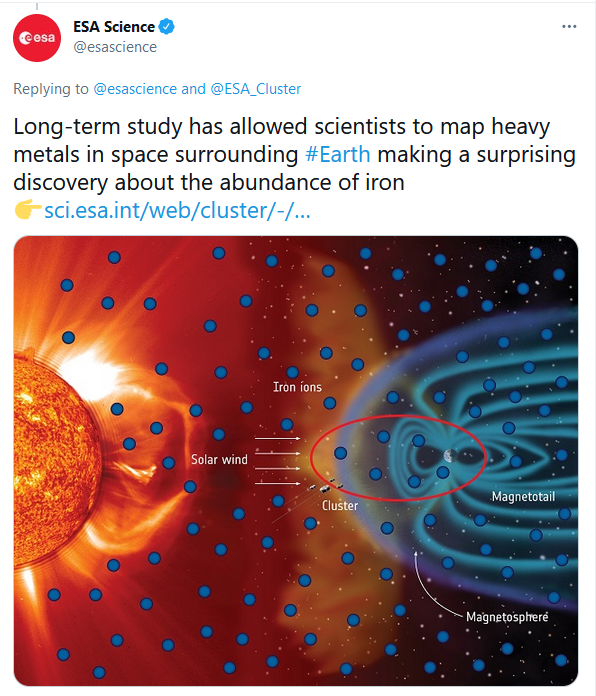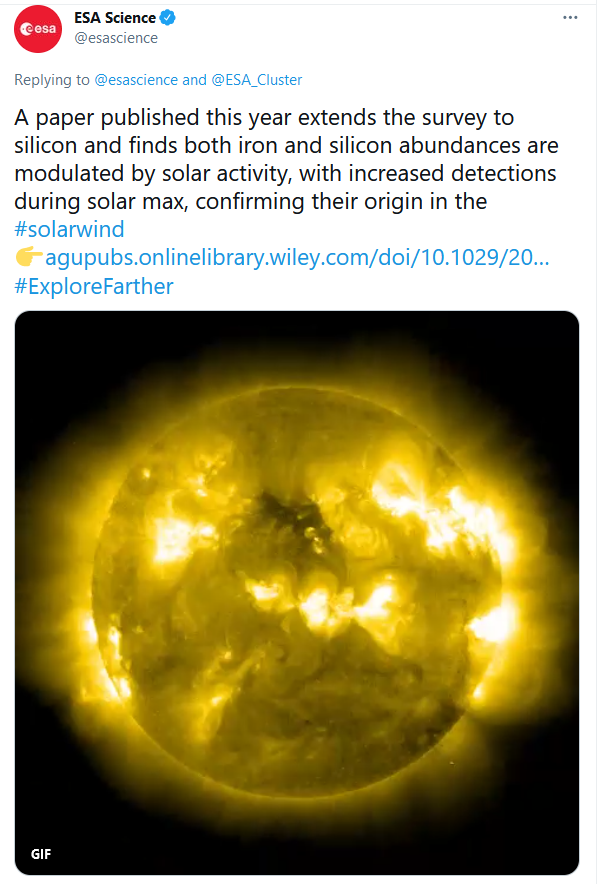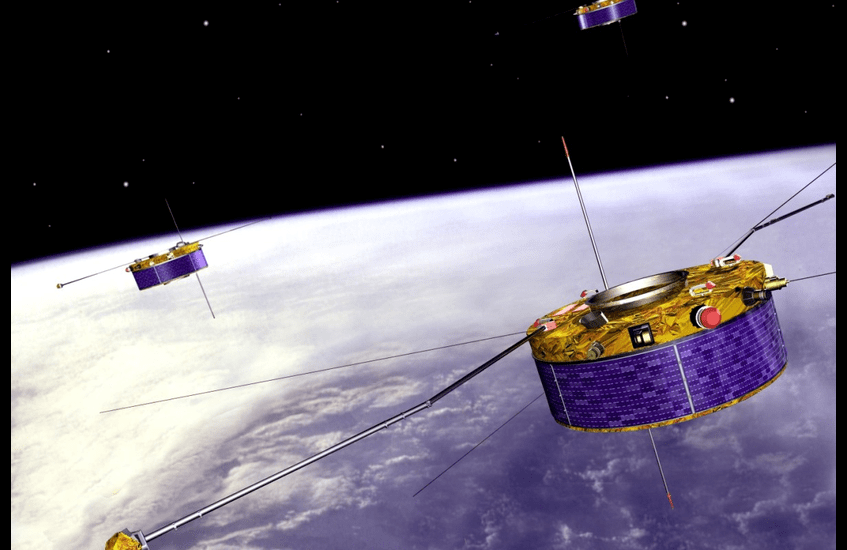Artist’s view of the Cluster satellites exploring the Earth’s magnetosphere. Image: ESA
In a recent and exciting twitter thread, ESA highlights a new paper by Stein Haaland et al. [2021] entitled “Heavy Metal and Rock in Space: Cluster RAPID Observations of Fe and Si“.
The full twitter text reads:
“First latin music, then heavy metal, and now heavy rock! A recent @ESA_Cluster study looks into the prevalence of iron and silicon in the magnetosphere, finding these heavy ions originate in the solar wind. The four @ESA_Cluster spacecraft, named Rumba, Samba, Salsa & Tango, have been studying Earth’s magnetic environment and its interaction with the #solarwind in three dimensions for more than 20 years. Long-term study has allowed scientists to map heavy metals in space surrounding #Earth making a surprising discovery about the abundance of iron. A paper published this year extends the survey to silicon and finds both iron and silicon abundances are modulated by solar activity, with increased detections during solar max, confirming their origin in the #solarwind. The detection of these heavy ions provides valuable information on the transport of matter in the Solar System, relevant to understanding our planet’s origin and evolution“.
The history of the Cluster satellites is pretty fascinating; it was supposed to be a 2-year mission but last year Cluster was heading into its third decade! The Space Physics group at the University of Bergen (today known as the Birkeland Centre for Space Science) has played an important part throughout the entire Cluster mission, building part of the RAPID instrument as well as performing data analysis. This new paper by Haaland et al. [2021] adds to an impressive list of papers in recent years by researchers at BCSS using Cluster data to study our near-Earth space. More examples are found in a news story we published in April 2020 entitled “The Cluster satellites keep flying“.
Below follow the five tweets from the account ESA Science:
